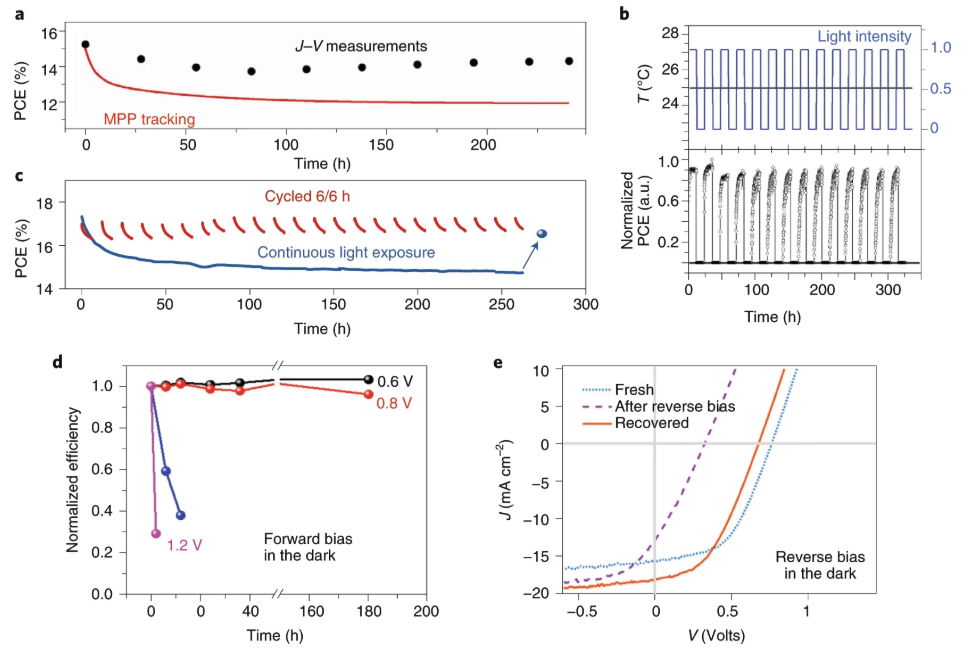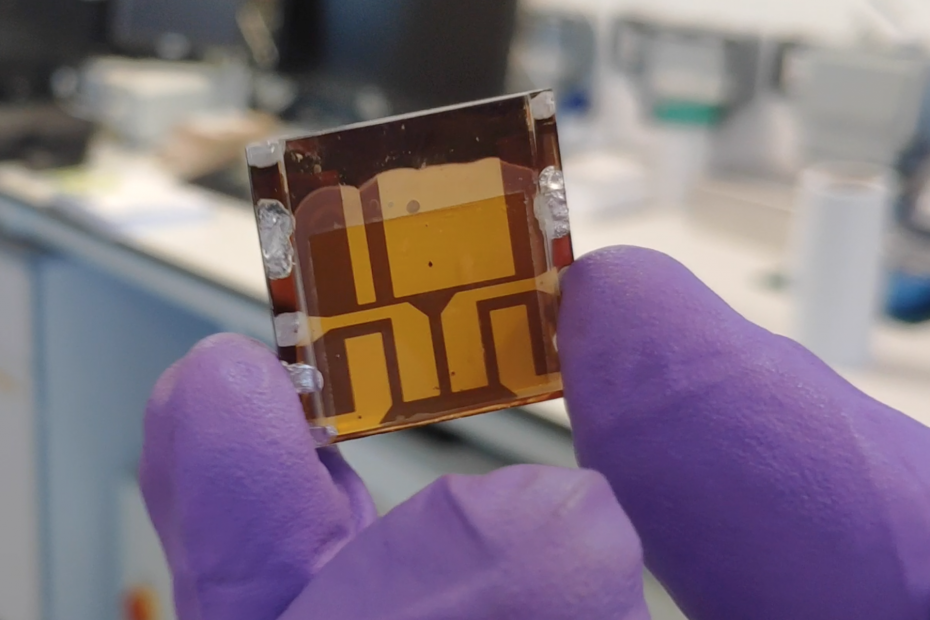Although perovskite solar cells are nearing commercialisation, a lack of consistency in publications makes it challenging to reproduce and compare results. In a paper recently published in Nature Energy, our PV team lead, Prof Trystan Watson, worked with scientists from all over the world to establish protocols for assessing and reporting the stability of perovskite photovoltaic devices. More reliable research will be produced as a result.
There are existing protocols to evaluate emerging photovoltaic devices, but they are not appropriate for halide perovskite solar cells – a new generation of solar cells designed to overcome the current state-of-the-art technologies. We worked with 59 leading researchers from 51 affiliations to reach a consensus on the suitable procedures and variables that should be reported in studies on the stability of perovskite solar cells (PSCs). The consensus statement updates the existing International Summit on Organic Photovoltaic Stability (ISOS) protocols by including methods that account for properties specific to this technology.
We have been researching PSCs for a number of years; they are a new kind of photovoltaic devices expected to rival the widespread silicon ones because of their low cost and strong absorbance. Efficiency of PSCs is already superior, but in order to reach commercialisation, their lifespan must be extended.
As the existing qualification tests to evaluate solar cell performance are not currently appropriate for PSCs, there is a lack of regularity in publications studying the stability of PSCs. The experimental procedures used and the parameters reported are often inconsistent, which makes it difficult to compare data and properly understand the cell degradation mechanisms.
The existing protocols were complemented by a set of testing procedures that include specific PSC features, including light-dark cycling – the study of cell behaviour under electrical bias in the dark or intrinsic stability testing – among others. A checklist for reporting results to improve reproducibility was also proposed.
However, there is still work to be done. The next step in standardisation is a technical report, which would take the technology from lab to industry. Green solutions for producing energy are essential, so these efforts made to standardise the study of perovskites will help society advance towards a new generation of enhanced solar cells.
The paper concludes the ways the stability of perovskite cells should be assessed and reported. The discussion was led by Prof. Mónica Lira-Cantú (ICN2) and Prof. Eugene A. Katz (Ben-Gurion University of the Negev). Among the authors are remarkable researchers such as Prof. Nam-Gyu Park and Prof. Henry J. Snaith, Nobel Prize candidates in 2017 for their discovery of the perovskite cells.
Read the full paper in Nature Energy here.

